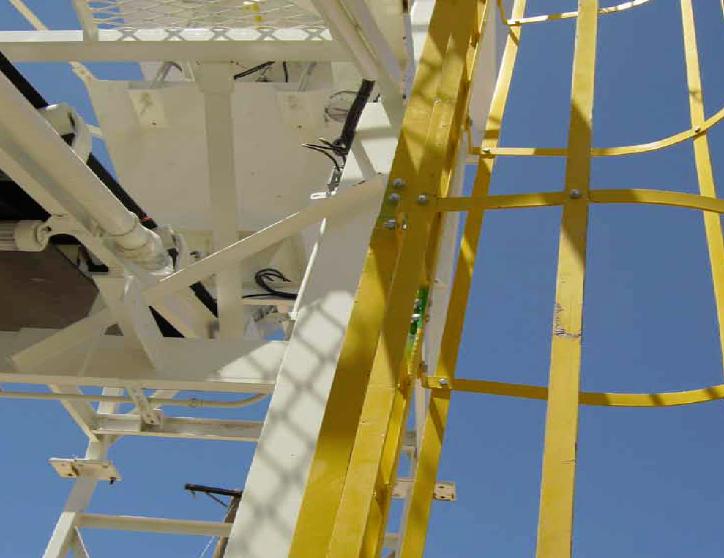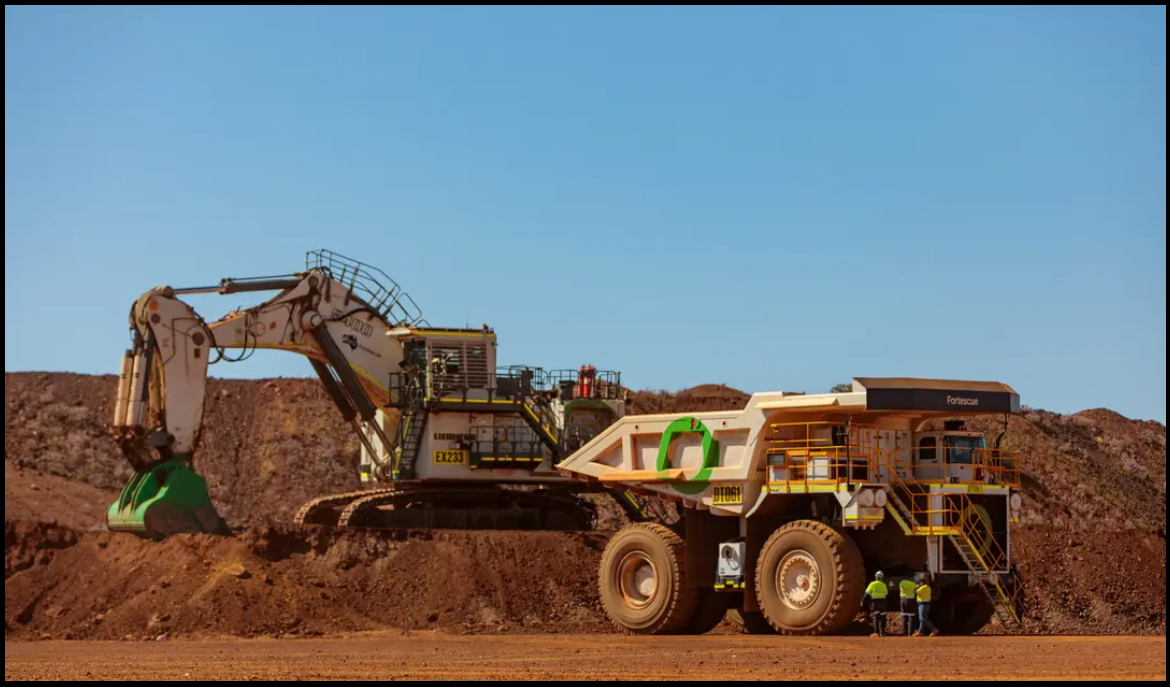
The Aurcana Corporation operates the La Negra mine in Mexico and is developing and constructing the Shafter Mine in Texas, which will quadruple the company’s silver output and raise it from junior to mid-tier status. The road to success will face challenges, though, as Gay Sutton hears from VP Operations Andy Nichols.
In 12 months time the Shafter mine, one of very few mines in the state of Texas, is due to go into production. The company undertaking this major development project is Aurcana Corporation, a well established TSX-V listed junior exploration company that has transitioned into being a mine operator with its existing Mexican operation.
“Our strategy at the beginning of this process was to concentrate on silver production, and we went looking for near-term, close-to-production opportunities,” explained VP operations Andy Nichols. The opportunity to acquire the La Negra mine, in the Mexican State of Querétaro, arose in 2006, and Aurcana made the purchase from Servicios Peñoles. “The mine produced silver, copper and zinc, with silver being by far the most important. It had been shut down in 2000 when silver prices were low, but it had been well cared for and everything was in place to put it back into operation.”
Peñoles had mined some 6.6 million tonnes of ore between 1970 and 2000 which was processed to extract silver, zinc, copper and lead. Considerable resources of silver remained, although they had been quantified before the implementation of the international NI 43-101 standard and were therefore not officially recognized. “The ore is found in chimneys, and mantos which are difficult to mine and are very challenging to follow. But there were 23 ore bodies developed in the mine, which made it a very attractive opportunity,” said Nichols.
Investments were made in underground equipment and in bringing the mine back into production. Meanwhile the mill was upgraded and expanded from 700 to 1000 tonnes a day. The mine survived a difficult time when metal prices crashed in 2008. “Our options were to shut the mine completely, or go into survival mode and hope for a rebound. We decided to do the latter to preserve the operating capability and team, and look for a quick recovery.”
The decision to keep La Negra going turned out to be a good one. Silver prices rebounded quickly and Aurcana was in a position to take advantage of the higher prices as it had managed to keep both its crew and site intact. “As the metal prices recovered the mine was expanded from 1000 tonnes per day to 1500 tonnes a day, which greatly improves cash flow.”
Underground, the company has continued to develop lower levels by drilling to locate the ore bodies, developing and channel sampling to quantify the reserves to NI 43-101 standards and then developing mining plans. “The ore bodies are very variable,” Nichols continued, “and we have to sill out on 15 meter levels and channel sample before we can prove them. It is therefore impractical to bring all the historic resources up to 43-101 standards.” It’s hard to predict the life of the mine in internationally accepted terms because of this. “However, looking at the historical Peñoles evidence we believe we have many years of production. What can be confirmed officially is that 28 ore bodies have now been identified and four have been brought up to NI 43-101 standards. Last year the mine produced 422,000 tonnes containing 838,000 tr oz of silver, 3.7 million lbs of copper and 5.1 million lbs of zinc and looks set to produce over 500,000 tonnes this year, with a completed first quarter of 127,000 tonnes.
Another excellent opportunity arose for Aurcana when the company acquired the Shafter silver mine in Texas from Silver Standard Resources. Located in Presideo County, Texas, the Shafter Mine is a new extension of the old Presideo mine which had been worked for silver between 1883 and 1942. The new extension was discovered by Gold Fields between 1978 and 1982, which constructed a 1050ft shaft to the bottom of the ore body and completed some 5,100ft of underground work—but none of the subsequent owners developed it further.
When Aurcana purchased the property the mine had 2 million tonnes of measured and indicated reserves which are expected to yield around 20 million ounces of silver, and a further 2 million tonnes of inferred resources with the prospect of confirming more through further exploration. After completing a feasibility study based on a new mine development plan, and completing the necessary $40 million financing, the project was placed on a fast track to production in 2012.
The plan is to drive a new decline down at 15 percent to intercept the ore body. “The first blast was in February to establish the portal face and we are now collaring the decline,” said Nichols. “It should take approximately nine months to reach the ore body, and start developing the stopes. A primary ventilation circuit will be established by connecting to the existing mine shafts and then we can start production stoping.” Another feature of the plan is to commence stoping from the decline, above the water level in the flooded Gold Fields shaft and development. This delays initial dewatering costs until after cash flow is established, fast tracks the pre-production and removes schedule risk.
Meanwhile, work is in progress on the surface to construct a new mill capable of processing 1500 tonnes of ore a day that will be commissioned and ready to operate in May 2012. The mill circuit uses a leach circuit with Merrill Crowe recovery, dry stack tailings and will produce silver dore.
The decline will continue to be extended to intersect the bottom of the Gold Fields shaft where there are existing drifts extending under the ore body. “We’ll begin stoping above the water table, but we will dewater ahead of mine development, by pumping the water out via the old shaft rather than at the decline face,” said Nichols. The decline will cut through the lower aquifer and this will be grouted from the decline face to reduce the intake of water.
Texasis a very dry state and water is a valuable resource. Not only will it be pumped up and used in the milling process but it will also be shared with local landowners for irrigation.
PresidioCountyis also an area of high unemployment and the reopening of the mine has been widely welcomed. “Our intention is to employ as many local people as possible, but as Texas has virtually no mining industry the skills are simply not there—so we are putting them there,” Nichols explained. “We have deliberately set the work rate on the decline at a slow pace, and we’re employing experienced miner-trainers to train new crews. As we increase the fleet of mining equipment and our initial trainees gain experience, we will be able to hire more trainees.” Mill trainees will be hired in the later stages of mill construction, and they will help to complete the mill while learning about the mill process and equipment.
According to current measured and indicated resource estimates, Shafter has a mine-life of five years, but once the decline approaches the ore body, exploration will recommence. “We will be able to start delineation of the ore body as we develop towards it. And once we get into it we will sill out the initial stopes. We will upgrade the inferred resources to measured and indicated, which should extend the mine life further.”
Bringing Shafter to production is currently occupying the majority of Aurcana’s resources. “It’s a big job for a junior company,” Nichols said. But once up and running it will produce around 3.8 million ounces of silver a year, more than quadrupling the company’s current output and elevating it from junior to the mid-tier status.
Looking to the future, the strategy is to continue exploring the considerable land holdings associated with both Shafter and La Negra. “The geologists at the two mines are tasked with feeding the mill, so they’re only interested in finding ore within reach of the existing mine development and infrastructure. With that in mind, we have formed a new exploration group to undertake exploration in a wider context,” Nichols said. “And both properties have considerable under-explored land holdings.”
“We are always looking for further investment opportunities,” he concluded. And of course, once Shafter is operating, the company’s resources will be freed up to focus elsewhere.
DOWNLOAD
 NA-June11-Aurcana-Bro-s.pdf
NA-June11-Aurcana-Bro-s.pdf













